Overclocking
The limits of this card are identical to those of competitors with similar Power Target. With an adjustable Power Target of 127%, the card approved almost 213 watts and was already slowed down by the voltage and unfortunately also the power. We were able to increase the GPU clock by 200 MHz and the memory clock by 150 MHz to achieve a stable result over a longer period of time.
Temperatures and clock rates
First, we compare the achieved start and end values for temperatures and GPU clock (boost) in tabular form:
| Initial |
Final value |
|
|---|---|---|
| Open Benchtable | ||
| GPU Temperatures |
29 °C | 71 °C |
| GPU clock | 1873 MHz | 1797 MHz |
| Ambient temperature | 22 °C | 22 °C |
| Closed Case | ||
| GPU Temperatures |
30 °C | 72 °C |
| GPU clock | 1873 MHz | 1797 MHz |
| Air temperature in the housing | 22°C | 41°C |
| OC (Open Benchtable) | ||
| GPU temperatures (approx. 2300 rpm) | 29 °C | 73 °C |
| GPU clock | 2101 MHz | 2050 MHz |
| Ambient temperature | 22°C | 22°C |
Overview Graphs: Temperatures vs. Clock
For better illustrations now again the respective courses considering our timeline of a total of 15 minutes each for the warm-up time.
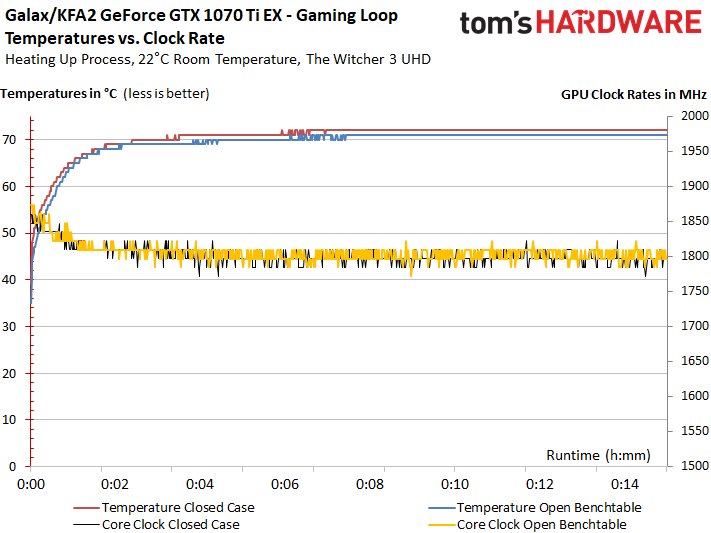
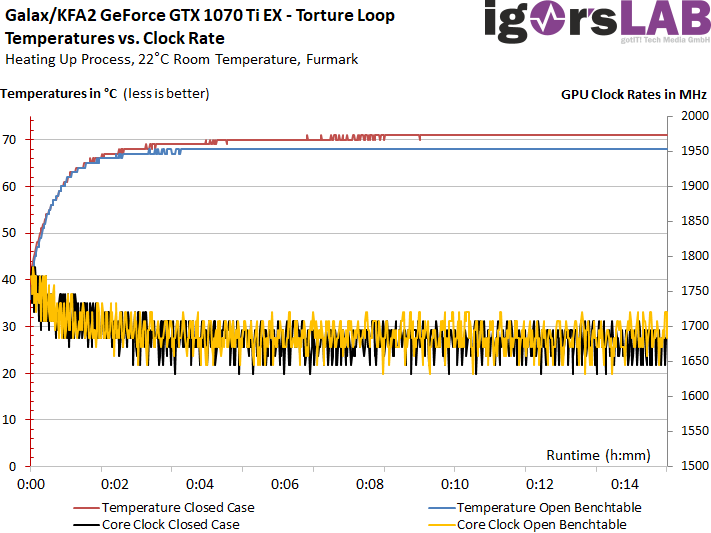
Thermal analysis of the back of the board
Finally, we consider the thermal analysis of the respective load states.
Gaming and overclocking
We see that pretty much all areas stay cool with the gaming loop, because the airflow is sufficiently dimensioned. However, you try to stay well below 75°C with the GPU so as not to lose too many boost steps.
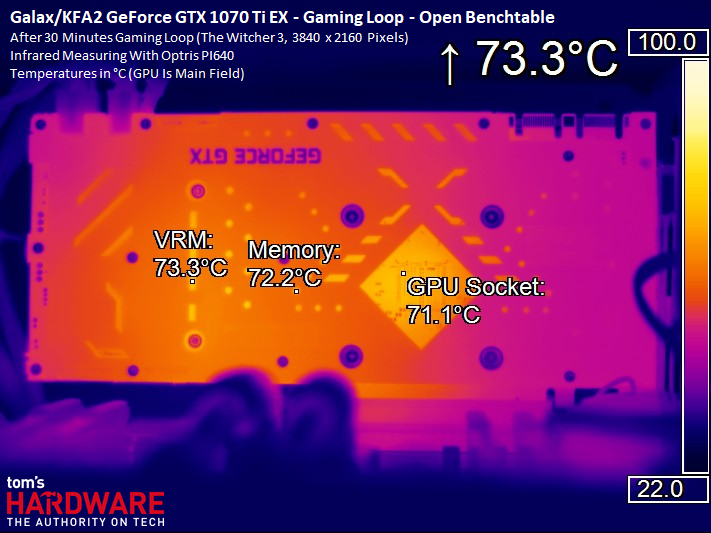
This also applies to the use in a closed housing, where we average on the board only by approx. three degrees higher temperatures.
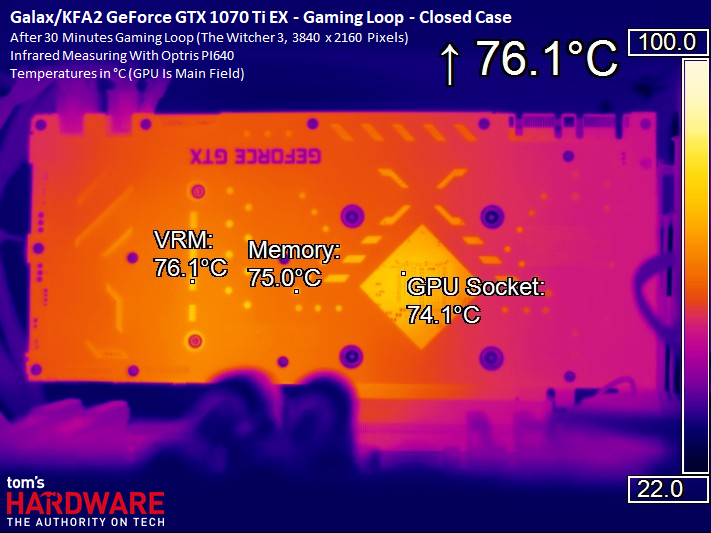
If we overclock at most, but leave the fans to themselves and close the housing, this draught is sufficient at then approx. 213 watts power consumption to stay at least below 77°C for the GPU. The voltage converters provide approx. 76°C does not pose any risk. The higher fan speeds are also the reason why VRM and memory end up a tick cooler despite increased power consumption.
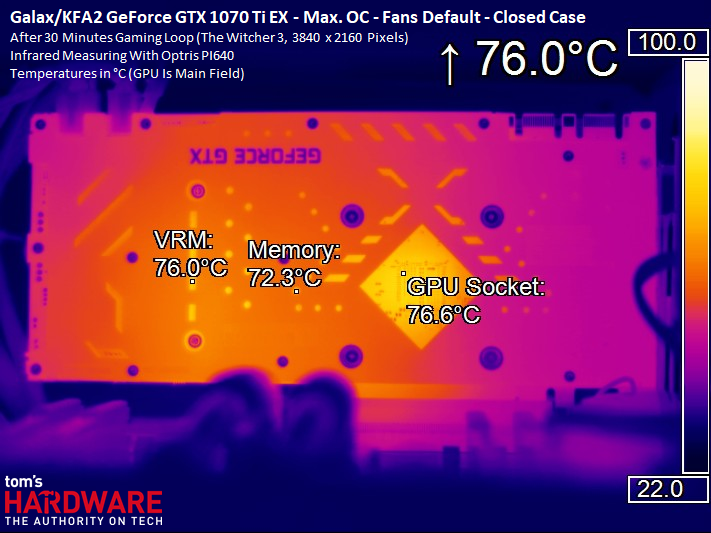
Stress
The stress test shifts the temperature load more towards memory and memory VRM, but everything stays almost as cool as the gaming loop.
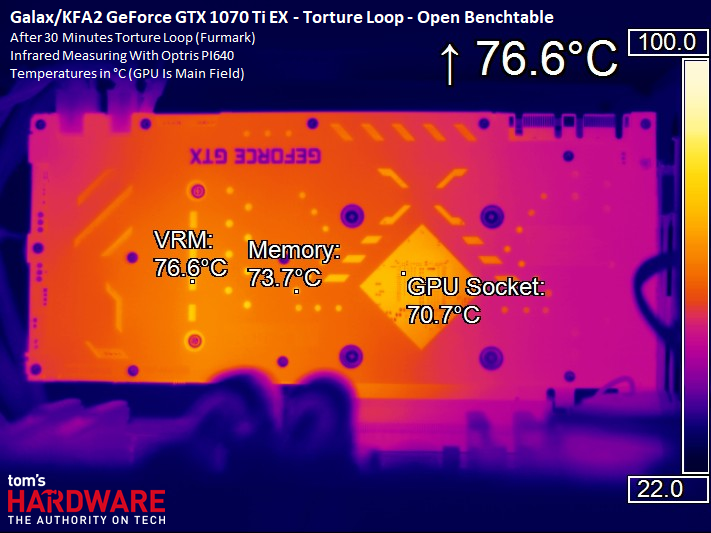
Also in the closed housing, this time it is approx. three to four degrees more at the neuralgic points, nothing more. You can still live comfortably with it
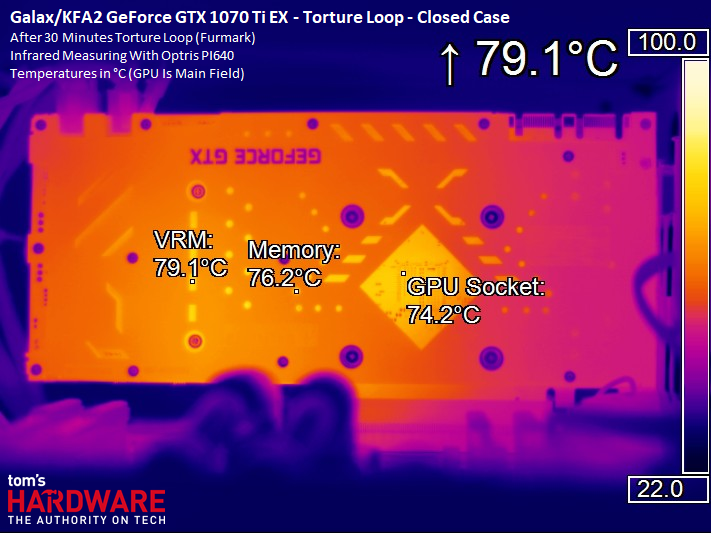
Warm-up and cooling phase
Finally, we look at these two processes, in which the images show well where the most heat is generated or where the heat is generated. where the cooling starts most directly.
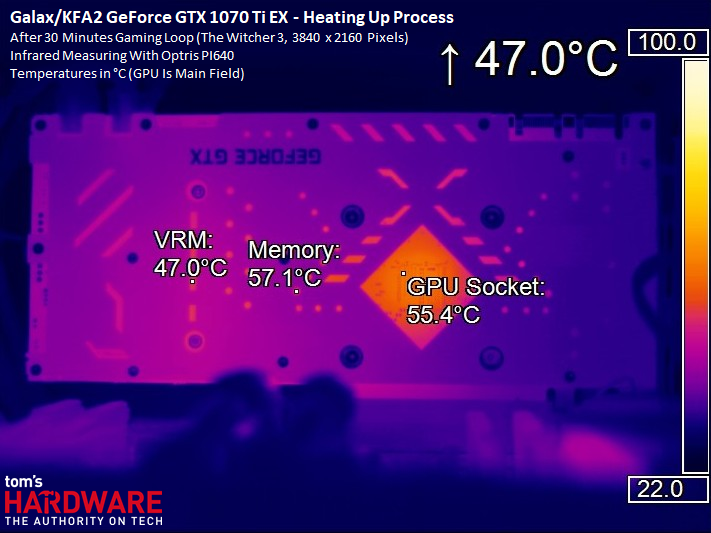
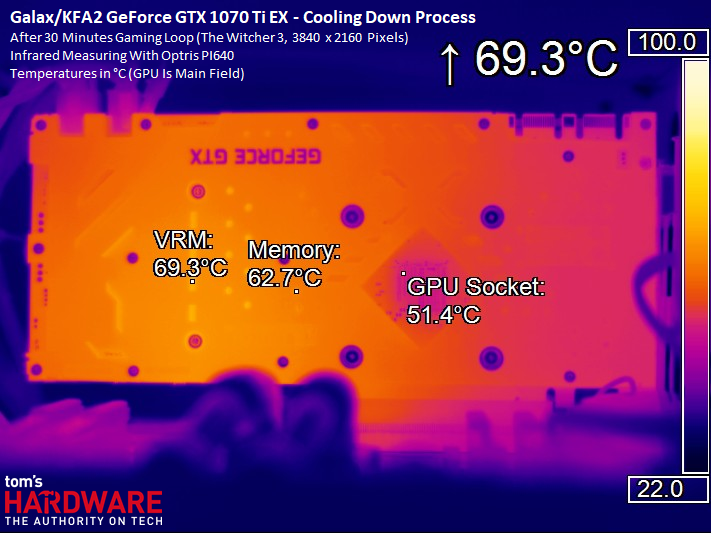


































Kommentieren